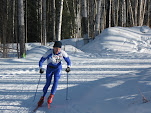Now Why Do I Live Here?
After six weeks of 4 hour daylight, months of sub zero, followed by mud season you really look forward to summer here. It's my favorite time of year. Yet, living close to nature does have its caveats.
The bears are out, and they're cranky, and not that far away. A man riding his bicycle was recently chased by an angry sow. He's lucky to have escaped. http://newsminer.com/2007/05/24/7155 The trail he was riding on is a known haunt of a sow, so riding alone (even with a dog) is perhaps not the wisest choice at that location. And upon assessing the situation he ran--the automatic reaction of a bear would be to chase. Fortunately the dog was enough to distract the bear while he could get away. What you really need to do is quickly assess the situation and guage the behavior of the bear. Sow protecting cub: You back away, slowly.
Meanwhile, the yellowjackets have returned--already! In our three years here the infestation has gotten worse each summer. They were bad in the late summer of 2005, when we had some stingings on the youth cross country team. The outbreak downright horrific in 2006, when the woods just buzzed 20 hours a day and you couldn't run more than 100 meters without running into one. There were two deaths locally from stingings and many reports of severe reactions. Epi-pens, to protect against anaphalactic shock, were sold out for weeks. Last year's influx started in late July and peaked during late August.
Well, it's May and THEY'RE BAAAACK! http://newsminer.com/2007/05/24/7153
Apparently the winter wasn't quite cold enough to freeze the queens. Rather, we had just enough snow cover to protect them from the deep freeze. Meanwhile, the redbacked vole population crashed, so they didn't put a dent in the populations, and it's been dry, which is conducive for prolifereration of the queens.
So if it stay's dry, we get loads of breeding yellowjackets who will get hungry an mean in the coming months. Another expansive fire year like 2004 or 2005 would put a damper on the activities, but that alternative is not attractive at all due to air quality issues, not to mention safety. Rain. We need rain.
I was asked by a tourist on my return flight from the East Coast last week, Why Would You Want To Live THERE? I responded as curtly but politely as possible, because of work and I like it, which ended the four sentence conversation.
Here's why:
We're on the edge of North America and the northwest quarter of the continent is has just a few people. I like the open space and lack of infrastructure.
No traffic.
Lots of skiing and trails.
A live and let live attitude--kind of libertarian.
The people are pretty nice and not as materialistic or status-driven as in the lower 48.
That's good for today!

